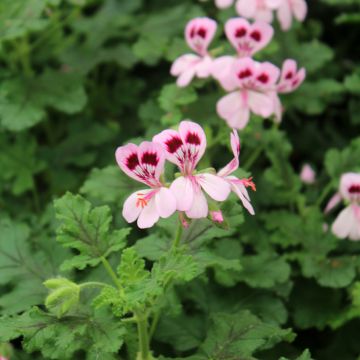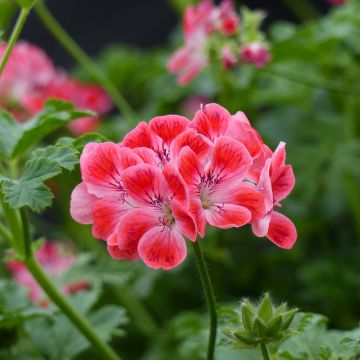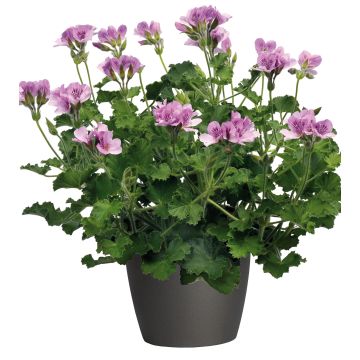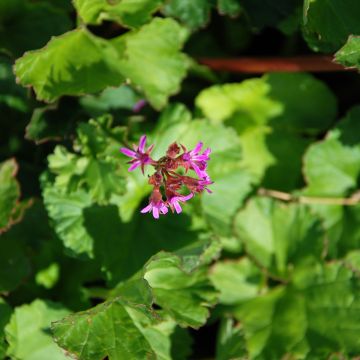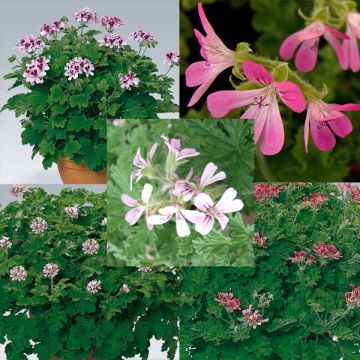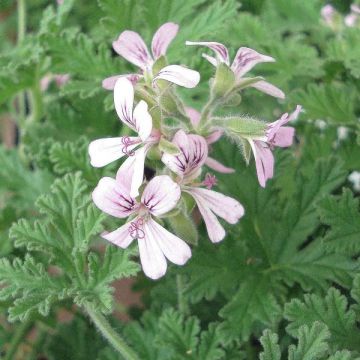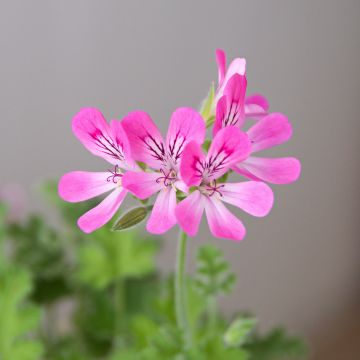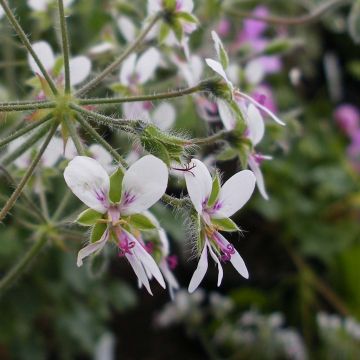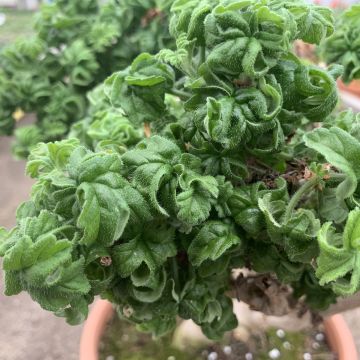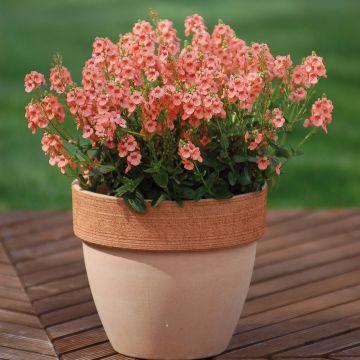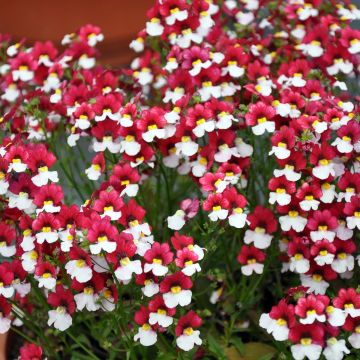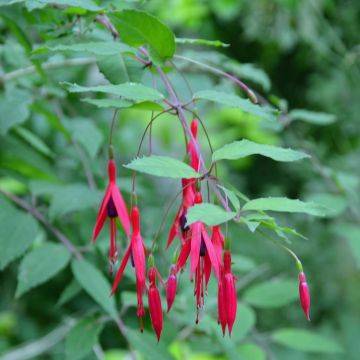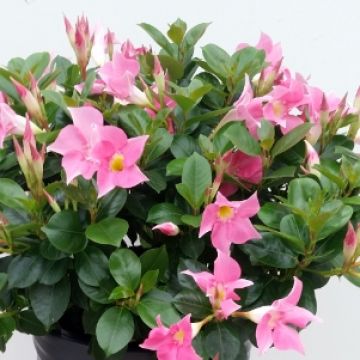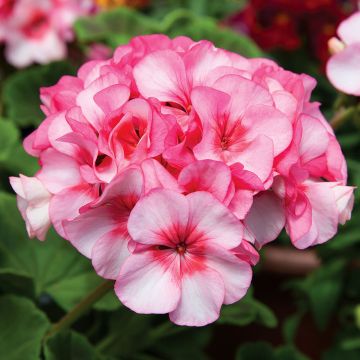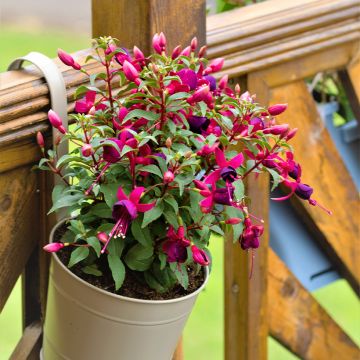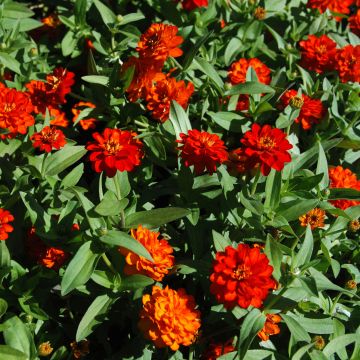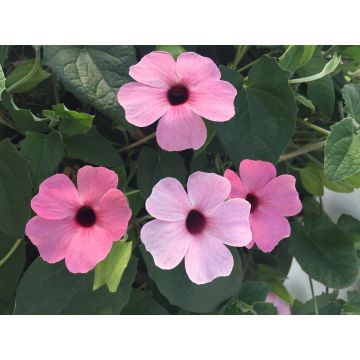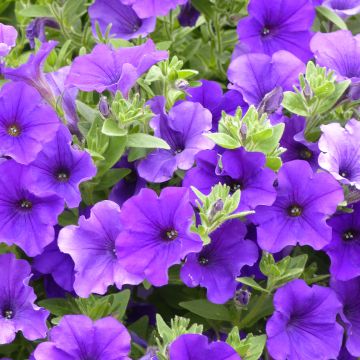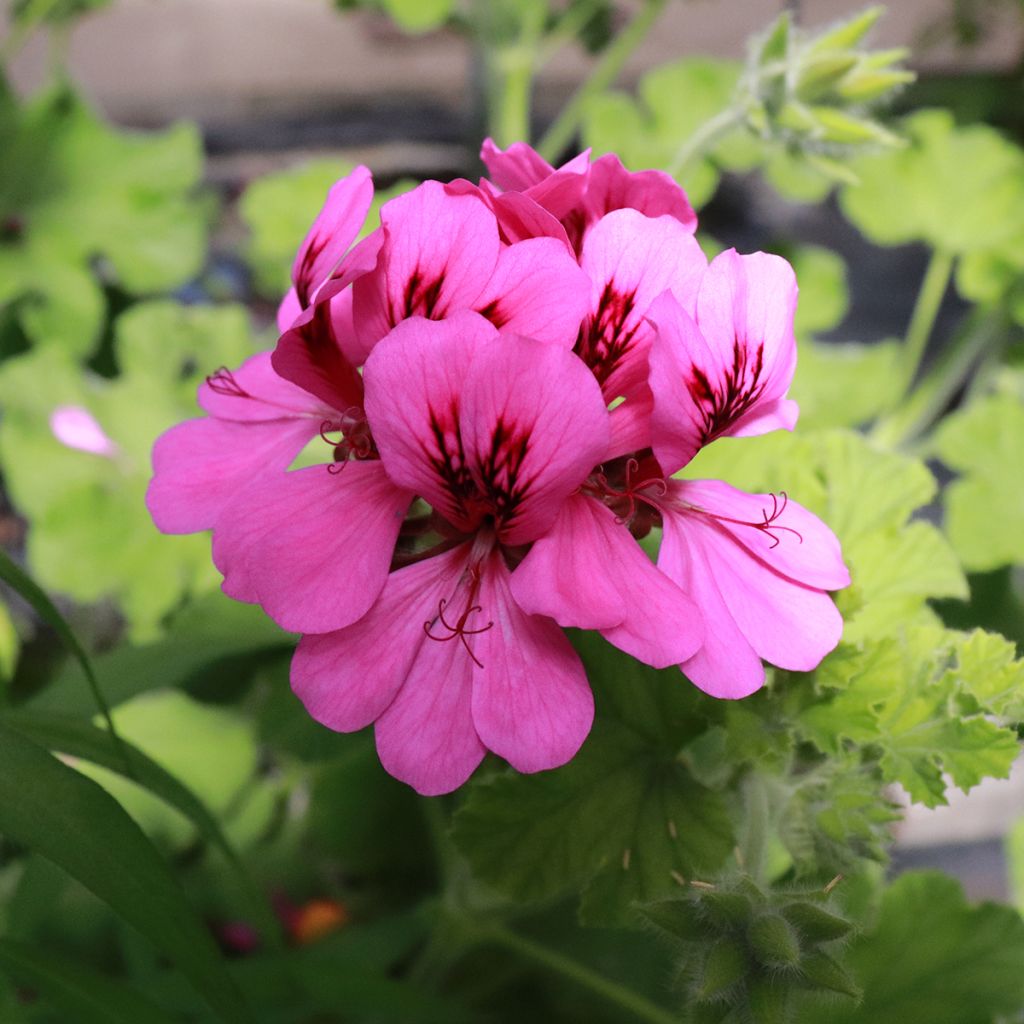

Pelargonium odorant Purple Unique - Géranium parfum fraise
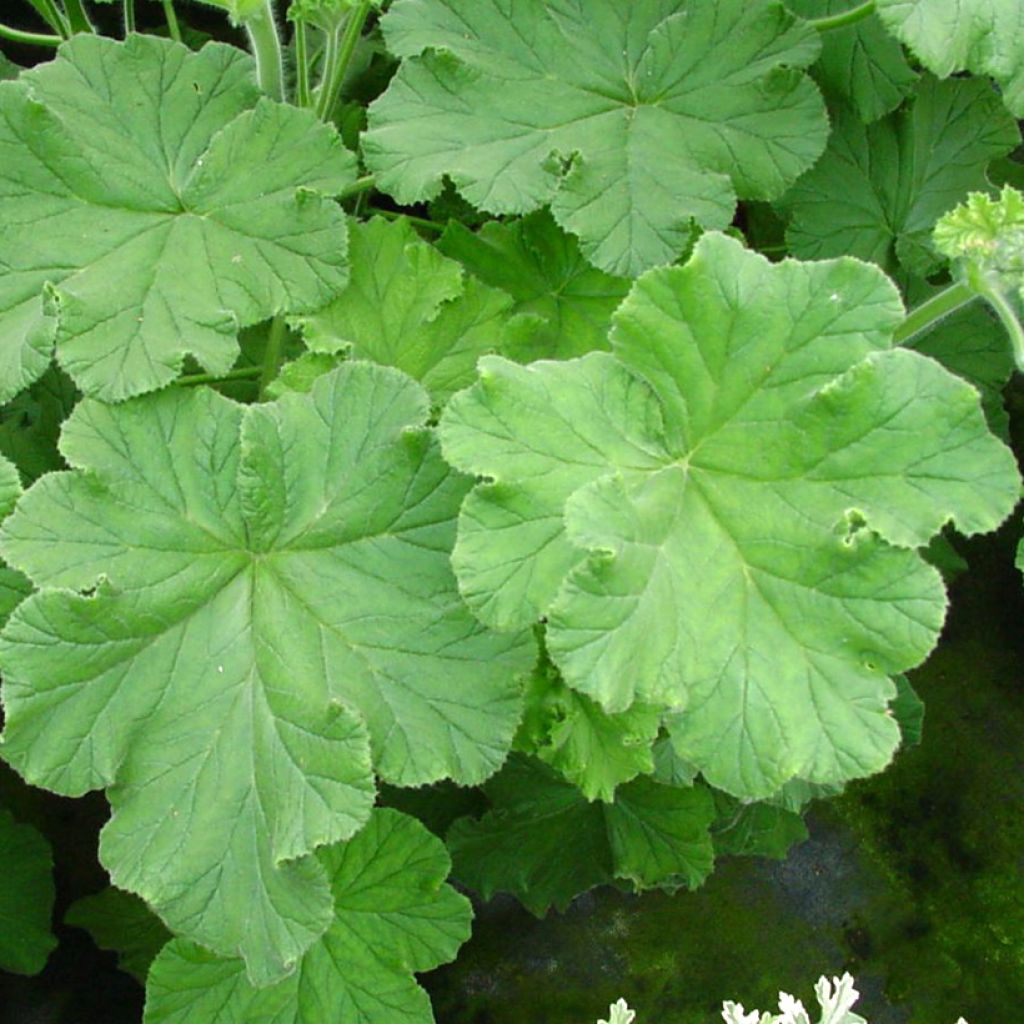

Pelargonium odorant Purple Unique - Géranium parfum fraise
Pelargonium Purple Unique
Pelargonium Purple Unique
This plant carries a 6 months recovery warranty
More information
We guarantee the quality of our plants for a full growing cycle, and will replace at our expense any plant that fails to recover under normal climatic and planting conditions.
From €5.90 for pickup delivery and €6.90 for home delivery
Express home delivery from €8.90.
Does this plant fit my garden?
Set up your Plantfit profile →
Description
The Pelargonium 'Purple Unique' is a variety of fragrant geranium from the Pelargoniums Unique group. This group is characterised by vigorous plants of large size, with large flowers. 'Purple Unique' forms a bush capable of reaching 1m (3ft) in all directions, with broad leaves, whose fragrance is difficult to define, but delightful. It is sometimes found to have a strawberry scent or a more spicy, woody scent. It develops large mauve flowers with almost black veins. This large bush, flowering from April to October, offers an exceptional spectacle in open ground in mild climates, and is interesting even in winter due to its evergreen foliage. Pelargoniums are bred' from plants' from difficult climates and soils, but somewhat frost-sensitive. They are naturally resistant to summer drought, but need to be brought into a cold greenhouse in areas with cold winters.
The fragrant Pelargonium 'Purple Unique' is an old horticultural hybrid introduced in the 1890s. It is probably the result of cross-breeding different botanical species, which have given it fragrant foliage and a bushy habit, with florist geraniums, responsible for its beautiful and long flowering. All geraniums are plants native to South Africa, particularly well adapted to hot and dry climates, accommodating to the soil, but sensitive to frost. 'Purple Unique' is a magnificent cultivar, both aromatic and floriferous from April to October. The plant has a rounded bushy habit, almost as wide as it is tall, and branched stems that lignify over time. This variety will reach a height of 1m (3ft) in one season (in fertile and moist soil) with a minimum spread of 80cm (32in). Its green foliage is composed of leaves divided into 5 large lobes, with more or less triangular toothed edges. They are loaded with essential oils responsible for their pungent fragrance. When the plant is exposed to cold, these leaves can turn red or orange. The flowering develops in the form of umbels bearing 4 to 9 mauve flowers. The upper 2 petals are veined with almost black purple.
With a simple touch, the Pelargonium 'Purple Unique' releases a powerful fragrance. It encourages passers-by to touch its foliage and lean in to admire its delightful flowers. So plant it, in a pot or in the ground, in a place where you can enjoy it up close, along a path or in a pot on the terrace or veranda. Fragrant geraniums are precious for perfuming a room, where they delight us with their sometimes unexpected and wonderful scents. We were stopped in our tracks one day after the rain, in front of a bed of fragrant geraniums, and spent a long time immersing ourselves in a symphony of delicate fragrances. In mild climates, it is a plant that withstands summer drought quite well and requires very little maintenance, making it valuable for dry gardens where it blends well with different plants from the scrubland. Be careful, the "pelargomania" virus is contagious, especially when one has the chance to live in a region with mild winters: in open ground, a small potted plant becomes a true bush, sometimes exceeding 1m (3ft) in all directions! Sturdy, robust, almost indestructible, fragrant geraniums repel insects and are capable of regrowing from the stump after experiencing temperatures as low as -5°C (23°F)!
Try adding the fragrance of fragrant pelargonium to a recipe, it works! The edible leaves are used in fruit salads and potpourri.
Report an error about the product description
Pelargonium Purple Unique in pictures
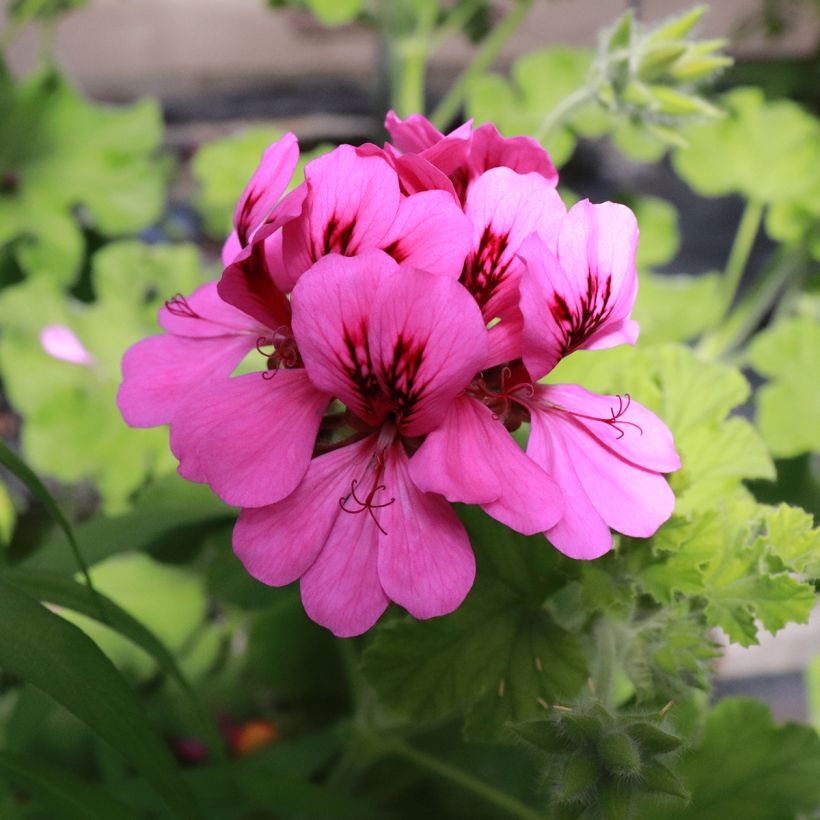

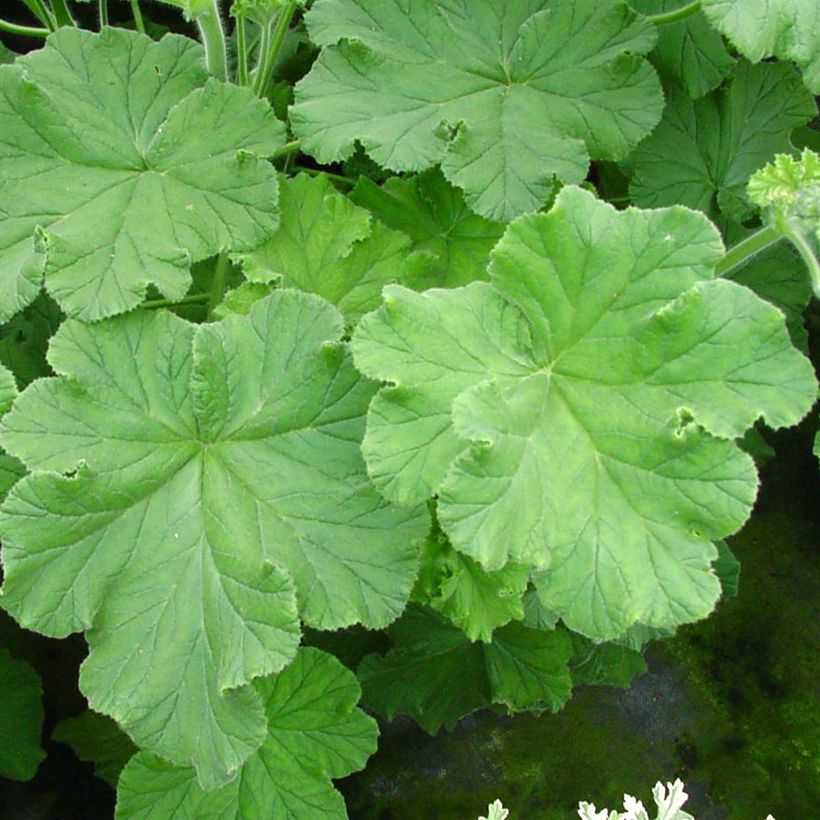

Flowering
Foliage
Plant habit
Botanical data
Pelargonium
Purple Unique
Geraniaceae
Cultivar or hybrid
Other Scented Geranium
Planting and care
Plant your geraniums in the ground after the last frosts, in a warm and sunny location. Mild Mediterranean and oceanic climates allow them to be planted in the ground in a sheltered location (for example, along a south-facing wall) throughout the year: once established, this fast-growing plant can withstand short frosts of around -5°C (23°F), as we have observed this year. You can also plant them in pots placed in a protected location, which you can take outside in May. If you are planting them in the ground, wait until the frosts have passed. Fragrant geraniums require well-drained, but not necessarily very rich or moist soil. Water moderately, once a week or once every 2 weeks, in hot and dry climates, this is usually sufficient (in a Mediterranean climate, a little inland, some of our tall botanical pelargoniums, reaching 1.20m (4ft), go through the entire summer with almost no water!). In pots, regular watering is necessary in summer. You can keep your geraniums by bringing them indoors under a veranda or a cold greenhouse in winter, or even inside the house, in a well-lit and not too heated room.
Pelargoniums are very sturdy plants that repel insects due to their aromatic foliage and are rarely affected by diseases under good growing conditions and in suitable climates.
They can be easily propagated by cuttings in summer. The cuttings should be protected from the cold during the first winter, in a bright room.
Planting period
Intended location
Care
This item has not been reviewed yet - be the first to leave a review about it.
Plug plants - Annuals
Haven't found what you were looking for?
Hardiness is the lowest winter temperature a plant can endure without suffering serious damage or even dying. However, hardiness is affected by location (a sheltered area, such as a patio), protection (winter cover) and soil type (hardiness is improved by well-drained soil).

Photo Sharing Terms & Conditions
In order to encourage gardeners to interact and share their experiences, Promesse de fleurs offers various media enabling content to be uploaded onto its Site - in particular via the ‘Photo sharing’ module.
The User agrees to refrain from:
- Posting any content that is illegal, prejudicial, insulting, racist, inciteful to hatred, revisionist, contrary to public decency, that infringes on privacy or on the privacy rights of third parties, in particular the publicity rights of persons and goods, intellectual property rights, or the right to privacy.
- Submitting content on behalf of a third party;
- Impersonate the identity of a third party and/or publish any personal information about a third party;
In general, the User undertakes to refrain from any unethical behaviour.
All Content (in particular text, comments, files, images, photos, videos, creative works, etc.), which may be subject to property or intellectual property rights, image or other private rights, shall remain the property of the User, subject to the limited rights granted by the terms of the licence granted by Promesse de fleurs as stated below. Users are at liberty to publish or not to publish such Content on the Site, notably via the ‘Photo Sharing’ facility, and accept that this Content shall be made public and freely accessible, notably on the Internet.
Users further acknowledge, undertake to have ,and guarantee that they hold all necessary rights and permissions to publish such material on the Site, in particular with regard to the legislation in force pertaining to any privacy, property, intellectual property, image, or contractual rights, or rights of any other nature. By publishing such Content on the Site, Users acknowledge accepting full liability as publishers of the Content within the meaning of the law, and grant Promesse de fleurs, free of charge, an inclusive, worldwide licence for the said Content for the entire duration of its publication, including all reproduction, representation, up/downloading, displaying, performing, transmission, and storage rights.
Users also grant permission for their name to be linked to the Content and accept that this link may not always be made available.
By engaging in posting material, Users consent to their Content becoming automatically accessible on the Internet, in particular on other sites and/or blogs and/or web pages of the Promesse de fleurs site, including in particular social pages and the Promesse de fleurs catalogue.
Users may secure the removal of entrusted content free of charge by issuing a simple request via our contact form.
The flowering period indicated on our website applies to countries and regions located in USDA zone 8 (France, the United Kingdom, Ireland, the Netherlands, etc.)
It will vary according to where you live:
- In zones 9 to 10 (Italy, Spain, Greece, etc.), flowering will occur about 2 to 4 weeks earlier.
- In zones 6 to 7 (Germany, Poland, Slovenia, and lower mountainous regions), flowering will be delayed by 2 to 3 weeks.
- In zone 5 (Central Europe, Scandinavia), blooming will be delayed by 3 to 5 weeks.
In temperate climates, pruning of spring-flowering shrubs (forsythia, spireas, etc.) should be done just after flowering.
Pruning of summer-flowering shrubs (Indian Lilac, Perovskia, etc.) can be done in winter or spring.
In cold regions as well as with frost-sensitive plants, avoid pruning too early when severe frosts may still occur.
The planting period indicated on our website applies to countries and regions located in USDA zone 8 (France, United Kingdom, Ireland, Netherlands).
It will vary according to where you live:
- In Mediterranean zones (Marseille, Madrid, Milan, etc.), autumn and winter are the best planting periods.
- In continental zones (Strasbourg, Munich, Vienna, etc.), delay planting by 2 to 3 weeks in spring and bring it forward by 2 to 4 weeks in autumn.
- In mountainous regions (the Alps, Pyrenees, Carpathians, etc.), it is best to plant in late spring (May-June) or late summer (August-September).
The harvesting period indicated on our website applies to countries and regions in USDA zone 8 (France, England, Ireland, the Netherlands).
In colder areas (Scandinavia, Poland, Austria...) fruit and vegetable harvests are likely to be delayed by 3-4 weeks.
In warmer areas (Italy, Spain, Greece, etc.), harvesting will probably take place earlier, depending on weather conditions.
The sowing periods indicated on our website apply to countries and regions within USDA Zone 8 (France, UK, Ireland, Netherlands).
In colder areas (Scandinavia, Poland, Austria...), delay any outdoor sowing by 3-4 weeks, or sow under glass.
In warmer climes (Italy, Spain, Greece, etc.), bring outdoor sowing forward by a few weeks.

































